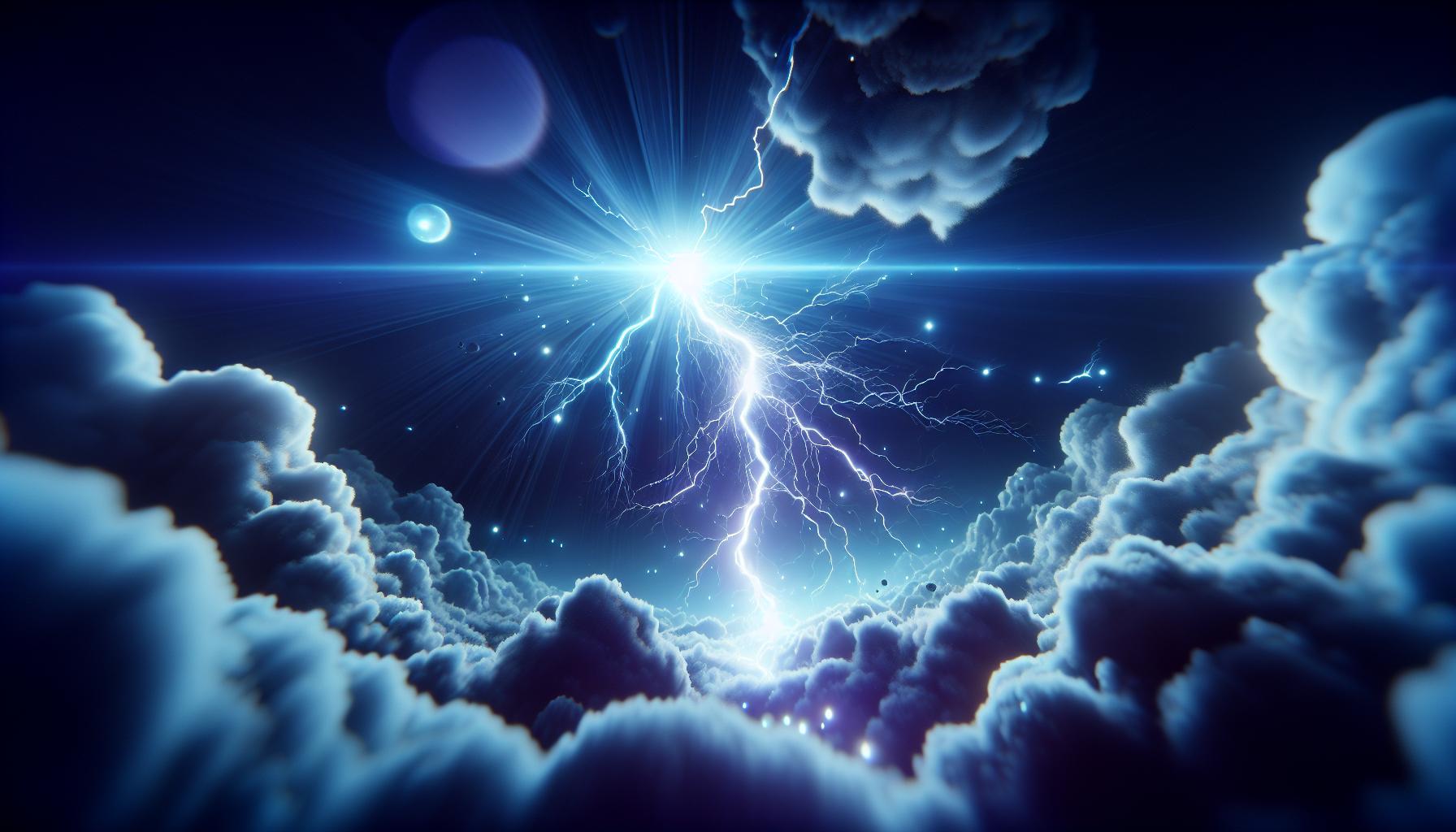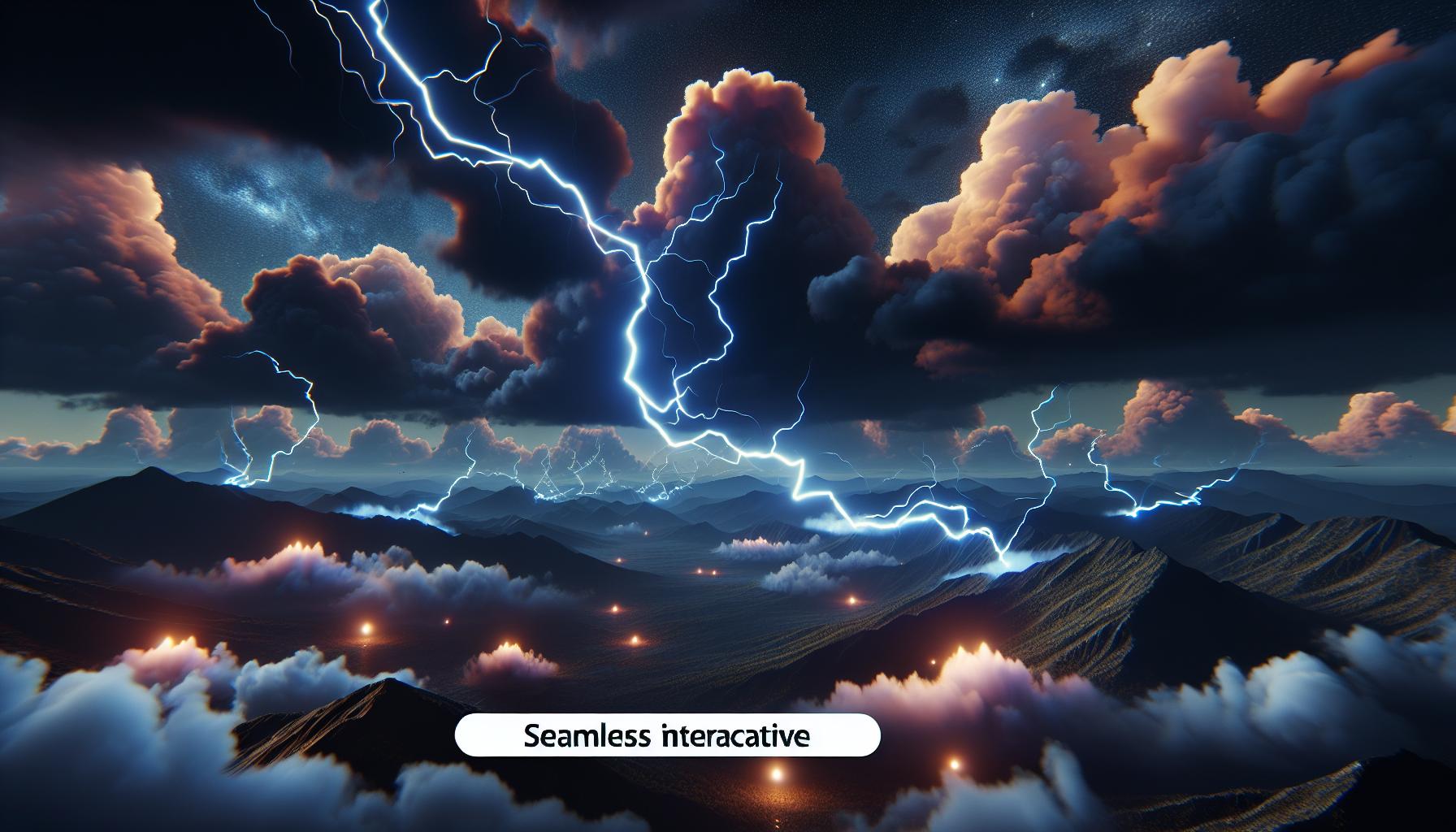Lightning has always fascinated me, both for its raw power and its stunning beauty. The way it illuminates the sky in a split second creates a spectacle that’s hard to ignore. In the realm of animation, capturing the essence of lightning can transform a simple scene into something truly electrifying.
When I first explored animated lightning effects, I realized how they can enhance storytelling and evoke emotions. Whether it’s a dramatic thunderstorm or a magical moment in a fantasy world, animated lightning adds depth and excitement. Join me as I dive into the world of animated lightning, exploring techniques, tools, and the artistry behind bringing this natural phenomenon to life on screen.
Key Takeaways
- Enhanced Visual Impact: Animated lightning captivates viewers by adding dynamic visuals that enhance storytelling and evoke strong emotions.
- Techniques and Tools: Popular software like Adobe After Effects and Blender enable artists to create realistic lightning effects through detailed techniques such as particle systems and layering.
- Sound Design Integration: Synchronizing sound effects with animated lightning amplifies emotional engagement, making the visual experience more immersive and impactful.
- User Accessibility: Ensuring animated lightning effects are accessible through high-contrast colors and alternative text enhances user experience for diverse audiences.
- Interactivity Elements: Incorporating interactive elements allows users to engage with animations, creating a personalized and immersive narrative experience.
- Comparative Animation Analysis: Understanding the similarities and differences between animated lightning and other effects (like fire, water, and smoke) enriches storytelling and emotional impact across various animations.
Animated: S_fb9ovxtpu= Lightning
Animated lightning creates dynamic visual impact, capturing viewers’ attention through its mesmerizing effects. This animation technique mimics natural lightning with realistic movements and varying intensities. By incorporating animated lightning, I can enhance the atmosphere and mood within scenes, making them feel more immersive.
Several software programs and tools assist in creating animated lightning. Applications like Adobe After Effects and Blender allow for detailed control over lightning’s look and behavior. Using particle systems, I can generate realistic flickers and trails, simulating the randomness of actual lightning strikes.
Specific techniques play a crucial role in creating compelling animated lightning. Layering effects adds depth, allowing me to combine multiple lightning bolts to create a complex visual. Adjusting color and opacity can evoke different emotions, such as tension during a storm or enchantment in a fantasy scene. Timing and synchronization with sound effects also amplify the overall impact, making it a vital aspect of animated storytelling.
Animated lightning doesn’t only serve an aesthetic purpose. It can drive narrative elements, highlighting crucial moments or character actions within a scene. By leveraging the unpredictability of lightning, I can convey urgency or chaos, enhancing the storytelling experience.
Key Features of Animated: S_fb9ovxtpu= Lightning

Animated lightning brings a captivating dimension to visual storytelling. Its dynamic nature enhances scenes and creates potent emotional responses.
Visual Quality
Visual quality is paramount in animated lightning. High-resolution graphics and detailed textures elevate the realism of lightning effects. Techniques like dynamic lighting simulate natural variations, providing shadows and highlights that change with the intensity of the lightning. Layering effects, such as motion blur and glow, make animations appear more fluid and lifelike. Color choices, ranging from bright whites to deep blues and purples, influence the scene’s mood, enhancing the overall aesthetic. Tools like Adobe After Effects and Blender offer advanced features for refining these visual elements, ensuring a polished final product.
Sound Design
Sound design complements animated lightning, adding depth to the viewing experience. Synchronizing sound effects, such as rumbling thunder or crackling energy, with the visual impact of lightning intensifies the emotional connection. Utilizing layered sounds creates a richer audio landscape that mimics real-life storms. Adjusting volume and pitch in relation to the lightning’s intensity heightens the sense of urgency or tension. Software like Adobe Audition allows for precise audio manipulation, ensuring that every bolt of lightning resonates with the audience. Sound effects should match the timing of visual flashes to create a cohesive and powerful storytelling experience.
User Experience

User experience in animated lightning encompasses how viewers perceive and interact with lightning effects in visual storytelling. Creating an engaging experience involves ensuring accessibility and interactivity for all audiences.
Accessibility
Accessibility focuses on ensuring that animated lightning effects are perceivable and engaging for users with varying needs. Utilizing high-contrast colors increases visibility for viewers with visual impairments. Implementing alternative text descriptions allows screen readers to convey essential information about lightning animations. Additionally, incorporating controls to pause or slow down animations accommodates those with cognitive processing challenges. Following Web Content Accessibility Guidelines (WCAG) further enhances the experience, making animated lightning not only striking but also inclusive.
Interactivity
Interactivity in animated lightning enhances user engagement and promotes a deeper emotional connection. Adding elements like clickable lightning bolts or dynamic effects that respond to user actions creates an immersive experience. For example, viewers might trigger lightning effects by clicking on specific areas of a scene, enhancing their involvement in the story. Incorporating branching narratives that change based on user interaction allows for personalized experiences. Utilizing game engines like Unity can facilitate these interactions, offering seamless animations and responsive mechanics that captivate users while immersing them in the unique visual environment.
Comparison with Similar Animations

Animated lightning effects share similarities with other visual animation techniques, such as animated fire, water, and smoke. Each type of animation serves to create dynamic environments and enhance storytelling. Understanding these comparisons helps in grasping the unique qualities of animated lightning.
- Animated Fire: Animated fire incorporates realistic flickering and color gradients. It demands attention through its warmth and intensity. Like lightning, fire animations strive for realism, using techniques that include particle systems and fluid dynamics. However, while fire evokes warmth, lightning often conveys urgency or chaos.
- Animated Water: Similar to lightning, animated water captures movement and flow. Water animations utilize transparency and reflections to create lifelike effects. Both animations require meticulous attention to light and shade, but water evokes calm or fluidity while lightning brings forth tension or drama.
- Animated Smoke: Smoke animation mimics the dispersal and layering effects seen in natural phenomena. Both animated lightning and smoke utilize opacity adjustments and dynamic motion to amplify visuals. While smoke can indicate mystical or tragic elements, lightning often symbolizes power and nature’s ferocity.
Comparative analysis of animated lightning with these other effects reveals essential storytelling impacts, highlighting how different animations evoke various emotions or themes. Techniques like color selection and motion dynamics significantly shape viewer perception. While each effect shares foundational principles, their applications within scenes lead to distinct experiences in storytelling.
In creating compelling animations, knowing how animated lightning compares to fire, water, and smoke enriches the creative process. Using specialized software and understanding the unique demands of each animation type helps elevate visual storytelling across various mediums, enhancing viewer engagement and emotional resonance.
Best Techniques
Exploring the world of animated lightning has deepened my appreciation for its role in storytelling. The way it captures attention and enhances emotions is truly remarkable. Using tools like Adobe After Effects and Blender, I’ve discovered how techniques like layering and dynamic lighting can transform a scene.
The impact of animated lightning goes beyond visuals; it creates a connection with the audience. By synchronizing sound effects and considering user experience, I’ve learned how to make these animations even more engaging. As I continue to experiment with different styles and techniques, I’m excited to see how animated lightning will elevate my future projects and storytelling endeavors.
